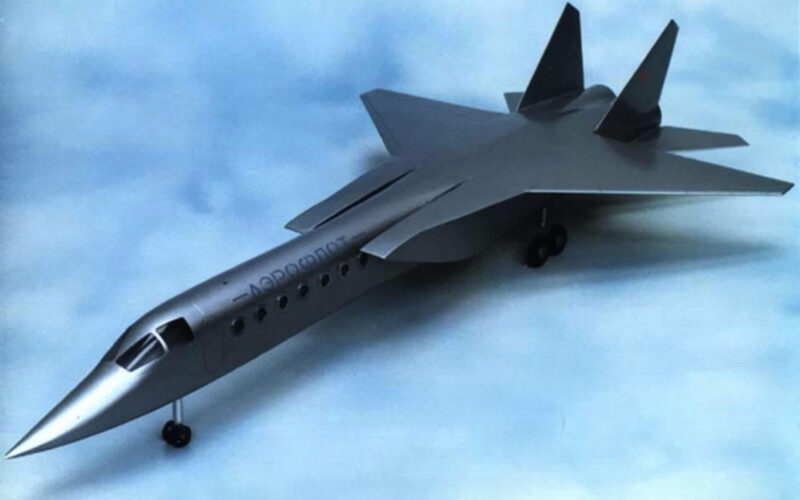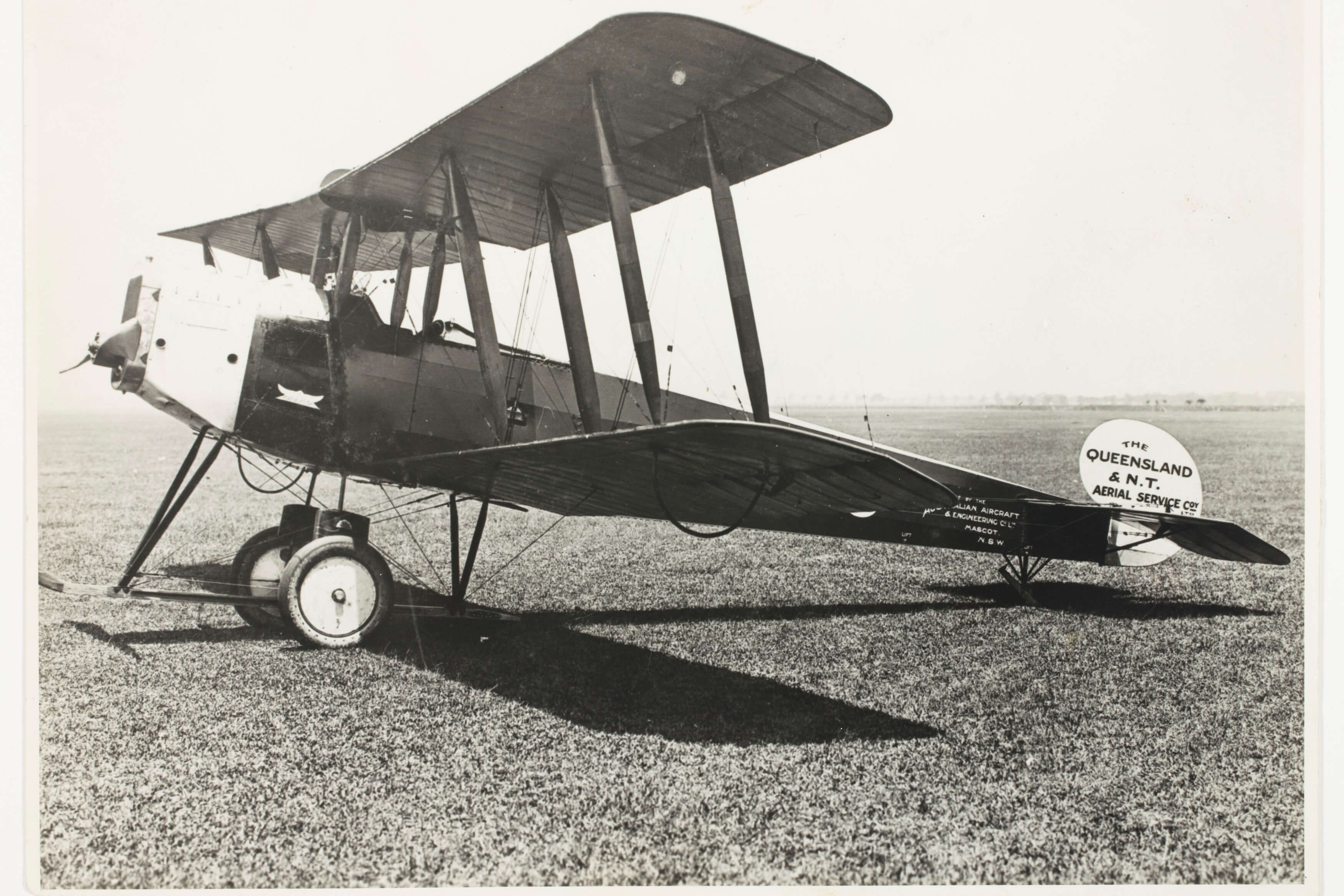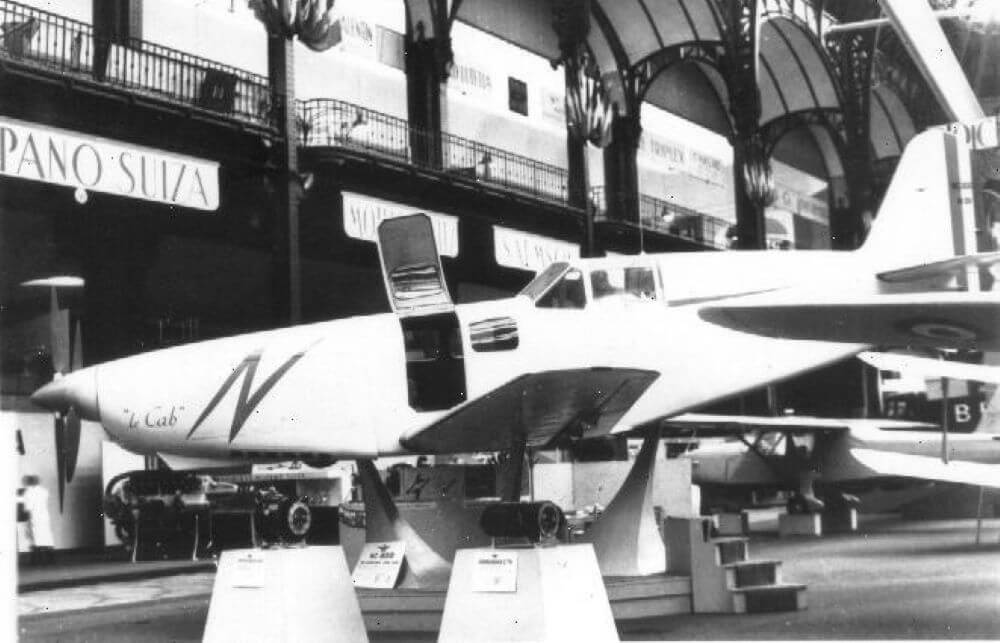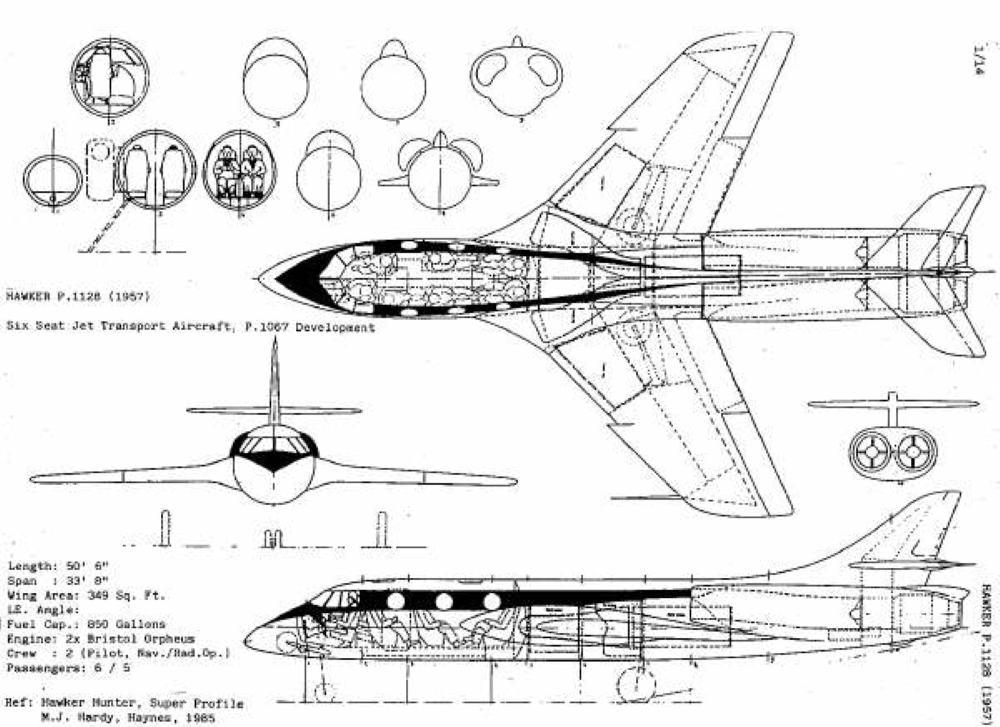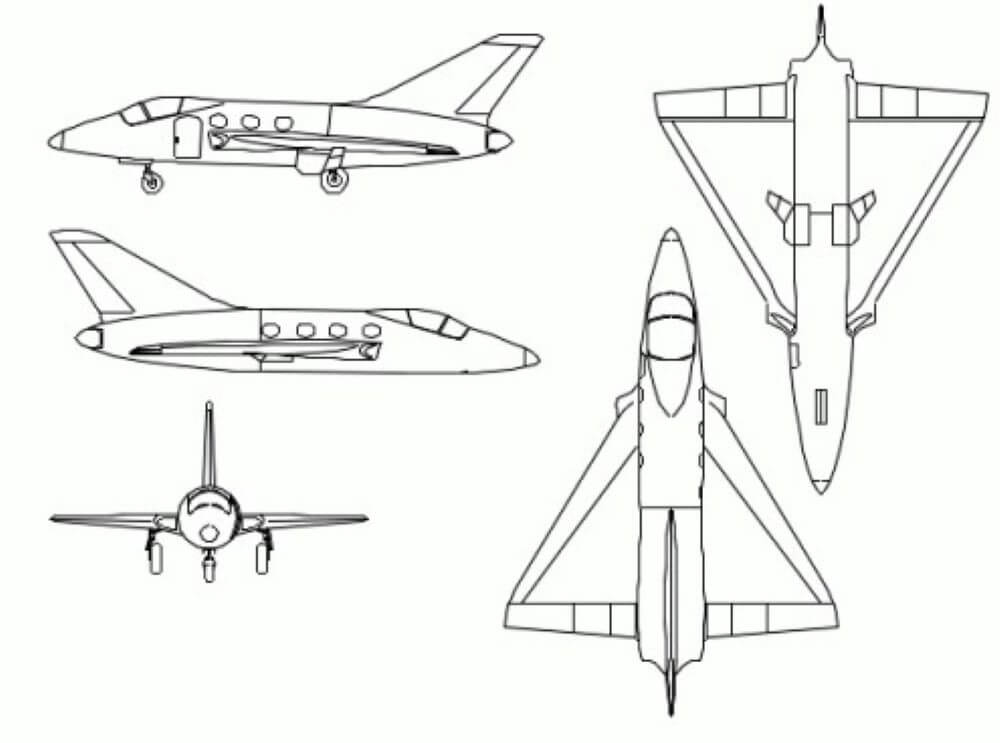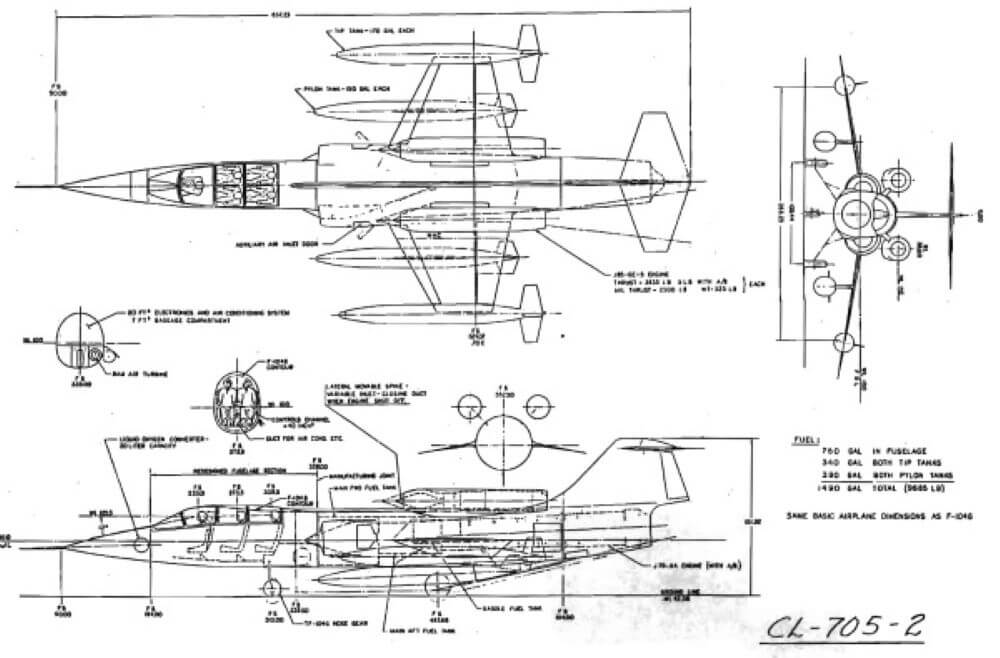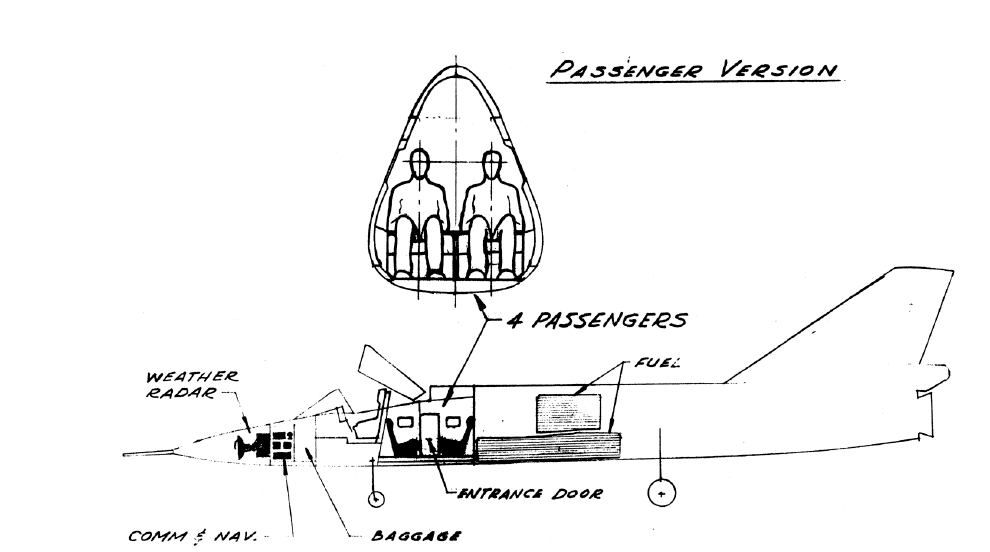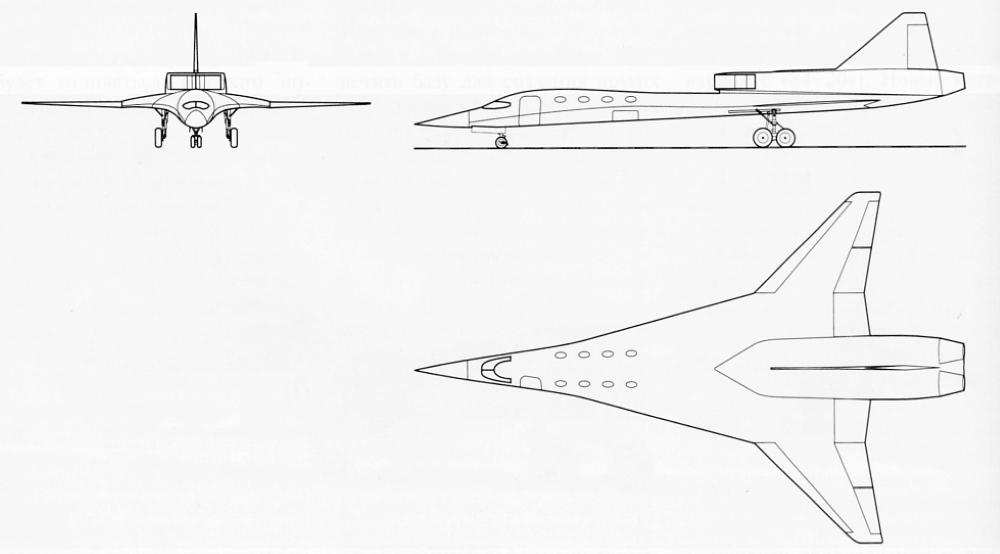Turning fighter jets into airliners seems crazy. Yet, it was tried many times, with manufacturers striving to put passenger cabins into military planes.
There is a simple and undeniable logic behind that: for almost the entire history of aviation, fighters were the fastest airplanes, designed to pursue and shoot down other aircraft. What if we could use that speed for transporting people?
There are many obstacles though. Most fighters were designed to be small and light and, as a result, there was little room for additional passengers, if any. The problem was exacerbated by comparatively short operational ranges: additional fuel tanks were required, further increasing weight and reducing internal volume.
Finally, most fighter aircraft – especially the jet-propelled ones – had extremely high operating costs. This inconvenience could be justified if the nation’s security is at stake, but was incompatible with commercial operations.
In the end, in comparison with other kinds of military planes – especially transporters and bombers – fighters often are the hardest airplanes to turn into airliners. But there still were a lot of people who tried.
Pre-history
The first World War pushed aviation from early experiments into full-scale military use and, by the end of it, thousands of aircraft performed a myriad of roles on all fronts. As the war ended, most of those aircraft – just as their pilots – were no longer needed.
Thus, cheap surplus airplanes went into civilian service in their masses, forming backbones of many early airlines. While transporters were the easiest to adapt for passenger and mail carrying service, smaller aircraft saw some use too.
For fighters, they were usually quite large and had at least two seats: an ability to carry bags of mail and a passenger was necessary. Airplanes like the Bristol F.2, the Royal Aircraft Factory S.E.5 or the Nieuport 12 A.2 – light bombers and reconnaissance aircraft with an additional fighter capability – could be used for such a role and sometimes found themselves in it after the war. The first two aircraft of Australian airline Qantas – the Avro 504K and the B.E.2 – could be considered as fighters turned into passenger aircraft, if we stretch both terms just a bit.
Qantas Avro 504 (Image: Hudson Fysh / Wikipedia)
Even after conversions, it would be difficult to call those aircraft airliners and their use by airlines had more to do with availability than with performance.
During the interwar period, the idea of twin-seat fighters was largely forgotten and, even after the appearance of heavy fighters prior and during the Second World War, nobody thought about carrying passengers in them.
With one interesting exception though. Not really a remodeled fighter but rather a commercial aircraft heavily inspired by fighter design, the NC-800 Le Cab was a French project presented at 1946 Paris Air Show. It was intended as a four-seat airplane for aerial taxi service, an alternative for those who could not or did not want to use regular commercial aviation. Despite predicting the model of business jet chartering, the project never took off.
NC-800 Le Cab mock up
Enjoying the jet age
The Hawker Hunter was one of the most successful British subsonic jet fighters. A lot of different variants were produced and even more of them – designed. Amongst those that did not leave the drawing board was the P.1128 Huntsman: a “bizjet” conversion that would use the Hunter wings and tail, but have a redesigned fuselage for carrying 5 or 6 passengers.
Hawker P-1128 Huntsman (Image: Hawker)
Proposed in 1957, the Huntsman, if produced, could have been one of the first business jets – a lucrative market that was just picking up speed at the time. One of its early members was the North American Sabreliner: an executive and command transport which incorporated some design solutions used on the F-86 Sabre fighter jet, but had little similarity with it beyond the name and the shape of its wings and tail.
A bit clearer example of the fighter-to-airliner conversion can be seen in the early design studies for the de Havilland DH.106 Comet, the first passenger jet. One of early proposals from the mid-40s had wings and tail derived from the de Havilland Vampire, coupled with new, larger fuselage. Such a plane could work as a short-range mail plane, but in just a few years de Havilland moved away from this idea and focused on larger proposals.
Supersonic transports
By the late 50s, it was clear that the future of combat aircraft lay beyond the sound barrier and it seemed that civil aviation would follow suit. As proposals for full-sized supersonic airliners were being presented and discussed in airshows worldwide, an idea to have something like that, but smaller and adapted for military purpose, was hanging in the air.
The Dassault Mirage III had a long and bumpy history, with – for the time – very long development and the first two Mirages not going beyond the prototype. During that development, a project named Transport Léger á Réaction – a light transport for fast response – was briefly considered. It was a conversion of the Mirage III with a cabin for 6 to 8 passengers. The supersonic capability of the initial fighter jet would have been lost and the airframe would have sustained significant changes. But the military was still interested in it as a way to quickly deliver a small number of officers to remote locations, a task somewhat important for the French Foreign Legion. Despite that, the project never went beyond the initial concept design.
Transport Léger á Réaction (Image: Jens Baganz / AirInternational)
The idea had more success in the United States, where at least two companies planned to add passenger compartments to their fighter jets.
One of them was Lockheed, whose F-104 Starfighter conversion would have included a redesigned cabin with four additional seats, as well as two complementary engines. Very little is known about this proposal.
Lockheed F-104 Starfighter passenger conversion (Image: Lockheed)
Another one, which went much further, was the Convair Supersonic Command Transport project. It was initiated in 1958 and would have resulted in a conversion of regular, mass-produced F-106 Delta Dart interceptors into small-capacity passenger aircraft “for rapid transportation of Command Staff personnel in emergency situations in the minimum of time”.
With modified F-106s, flying at Mach 1.8, officers could have been delivered across the U.S. territory in a matter of hours, assuming personal command in an emergency situation, or escaping one if need be. The aircraft would be modified by removing heavy and expensive radar, navigational, and fire control equipment and replacing it with four passenger seats and additional fuel tanks.
Convair Supersonic Command Transport (Image: Convair)
After some deliberation the idea shifted to using the B-58 Hustler bomber, which could maintain higher speed and carry more passengers. At the same time, the B-58 was considered as a testbed for various ideas related to commercial supersonic transport, but none of them saw the light of the day.
MiGs for airlines
The business jet on the basis of the Mikoyan-Gurevich MiG-25 Foxbat supersonic interceptor is, likely, the best-known example of failed fighter jet airliners. The idea of experiencing supersonic cruise aboard the world’s fastest jet seemed attractive, yet it did not go any further than similar projects in the West.
A plan to fit a large passenger compartment into the nose of the MiG-25 appeared in 1963, in the late stage of the development. To accommodate a larger fuselage, wings and tail would have to be slightly redesigned, but the aircraft would still share as many components with the interceptor as possible. It would fit 5 or 6 passengers or one tonne of cargo, and likely have a rather modest top speed in comparison with the base variant, which could reach 3000 km/h.
The aircraft would have not been limited to a military role and serve with Aeroflot alongside larger supersonic airliners. But its main problem was short operational range, as even increased fuel capacity was not enough to counter thirsty afterburners of massive Tumansky R-15 engines. High unit cost and inability to serve relatively short civilian runways were last nails in the coffin and the idea was dropped in 1965.
By the way, nowadays amongst the aviation geeks the passenger version of the MiG-25 is often called either Ye-115 or Ye-155, which is not entirely correct. The project did not have a separate name (or at least it was not revealed), while Ye-155 is a designation of the entire MiG-25 development program, and Ye-115 is, likely, just a writing error.
After the fall of the Soviet Union, Mikoyan-Gurevich tried to return to the idea once more, presenting, likely, the last serious proposal for a fighter jet airliner.
During the 80s, the bureau worked on a project of the next generation of long-range interceptors, intended to replace the MiG-25 and its successor MiG-31. The project was designated 70.1 and was a large aircraft with delta wings and engines mounted on top of the fuselage, capable of Mach 3, super cruise, and carrying air-to-air armament of unprecedented power and range.
By the late 80s, it was clear that the Soviet Union was on the brink of collapse and would have neither need nor capability to produce such an airplane. The focus then shifted to designing a supersonic business jet on its basis, the MiG-70.1P. The project was presented at Moscow Air Show in 1991 and 1992, but found no commercial backers and went into obscurity shortly after.
MiG-70.1P (Image:Warspot.ru)
Ironically, in the 90s and the 2000s, the MiG-25 and MiG-31, as well as the Su-27 were quite often used for giving Western tourists joyrides, as entire companies were founded on a premise of attracting thrill-seekers and allowing them to fly in high-performance Soviet military aircraft. Although considerably smaller than it was back then, this market remains to this day, making late Soviet fighter jets the only ones that saw considerable civilian use.
With just a bit of financing, this use could have been enhanced though. In the middle of the first decade of the new century, Airbus briefly considered doing just that. One of its projects – the MIGBUS – is, quite likely, the craziest proposal to ever come out of the manufacturer’s collective consciousness, but the story is a bit too long and too complicated to be discussed here. To find it, follow the link below.

